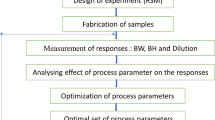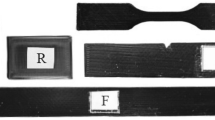Abstract
Chain-die forming is a promising manufacturing technology that is emerging as an alternative to roll forming and stamping in fabricating advanced high-strength steel (AHSS) products. The maximum edge longitudinal membrane strain (MELMS) and the springback are regarded as the crucial indicators for evaluating the quality of fabricated AHSS products. As Chain-die forming is a newly developed sheet metal fabricating method, the evaluations and predictions of the effects of the independent product parameters on MELMS and springback are of high interest. This paper selects three important quantitative product parameters (tensile strength, flange height, and thickness) to investigate experimentally the effects of different product parameters on the quality of Chain-die-formed U-profile AHSS products. Experimental verification on a new group of experimental samples using the established mathematical expressions is also performed successfully. This study shows that response surface methodology with Box-Behnken design can be efficiently applied for evaluating and predicting the MELMS and springback of Chain-die-formed AHSS products. It is found that the most influential parameter which determines the severity of the MELMS is the linear effect of flange height. This study also indicates that the springback is largely determined by the linear effect of tensile strength. The findings are expected to help designers and researchers to identify the formability range and predict the quality of Chain-die-formed AHSS products in advance of the quality control and fabrication stages.
Similar content being viewed by others
References
Ding, S., Daniel, W. J. T., Yuan, J., & Zhang, Y. (2008). Making roll forming flexible-introduction to Chain forming. In Yokohama Tube and Pipe 2011 Joint Symposium-Innovative Tube and Pipe Manufacturing and Forming (pp. 335–340). Curran Associates Inc
Ding, S. & Zhang, Y. (2012). Chain-die Forming, is it a right forming method to make structural parts of motor vehicles with UHSS material. International Conference on Advanced Vehicle Technologies and Integration (VTI 2012) (pp. 1–6)
Zhang Y, Ding S (2012) A comparison study of chain-die forming and roll forming by forming a top hat section. 14th International Conference on Metal Forming. Akademia Górniczo-Hutnicza in Kraków, Krakow, pp. 703–706
Zhang Y, Ding S (2013) Parametric study on chain-die forming for advanced high strength steels. International Journal of Materials and Product Technology 15 47(1–4):138–149
Lindgren M (2007) Cold roll forming of a U-channel made of high strength steel. J Mater Process Technol 186(1):77–81
Zeng G, Li SH, Yu ZQ, Lai XM (2009) Optimization design of roll profiles for cold roll forming based on response surface method. Mater Des 30(6):1930–1938
Bidabadi BS, Naeini HM, Tehrani MS, Barghikar H (2016) Experimental and numerical study of bowing defects in cold roll-formed, U-channel sections. J Constr Steel Res 118:243–253
Buang MS, Abdullah SA, Saedon J (2015) Optimization of springback prediction in U-channel process using response surface methodology. International Journal of Mechanical, Aerospace, Industrial, Mechatronic and Manufacturing Engineering 1:31185
Chen P, Koç M, Wenner ML (2008) Experimental investigation of springback variation in forming of high strength steels. J Manuf Sci Eng 130(4):041006
Bahloul R, Ben-Elechi S, Potiron A (2006) Optimisation of springback predicted by experimental and numerical approach by using response surface methodology. J Mater Process Technol 173(1):101–110
Samuel M (2000) Experimental and numerical prediction of springback and side wall curl in U-bendings of anisotropic sheet metals. J Mater Process Technol 105(3):382–393
Gaitonde VN, Karnik SR, Achyutha BT, Siddeswarappa B (2008) Taguchi optimization in drilling of AISI 316L stainless steel to minimize burr size using multi-performance objective based on membership function. J Mater Process Technol 202(1):374–379
Liu Z, Liu S, Li Y, Meehan PA (2014) Modeling and optimization of surface roughness in incremental sheet forming using a multi-objective function. Mater Manuf Process 29(7):808–818
Li Y, Lu H, Daniel WJ, Meehan PA (2015) Investigation and optimization of deformation energy and geometric accuracy in the incremental sheet forming process using response surface methodology. Int J Adv Manuf Technol 79(9–12):2041–2055
What is response optimization. (2014), http://support.minitab.com/
Lai XM, Luo AH, Zhang YS, Chen GL (2009) Optimal design of electrode cooling system for resistance spot welding with the response surface method. Int J Adv Manuf Technol 41(3–4):226–233
Mourabet M, El Rhilassi A, El Boujaady H, Bennani-Ziatni M, El Hamri R, Taitai A (2012) Removal of fluoride from aqueous solution by adsorption on Apatitic tricalcium phosphate using Box–Behnken design and desirability function. Appl Surf Sci 258(10):4402–4410
Author information
Authors and Affiliations
Corresponding author
Rights and permissions
About this article
Cite this article
Sun, Y., Li, Y., Liu, Z. et al. Experimental investigation and prediction of the maximum edge longitudinal membrane strain and springback of Chain-die-formed AHSS U-channels using response surface methodology. Int J Adv Manuf Technol 90, 1963–1976 (2017). https://doi.org/10.1007/s00170-016-9522-3
Received:
Accepted:
Published:
Issue Date:
DOI: https://doi.org/10.1007/s00170-016-9522-3




